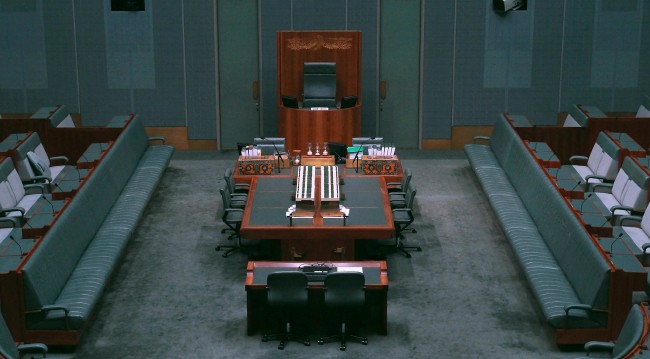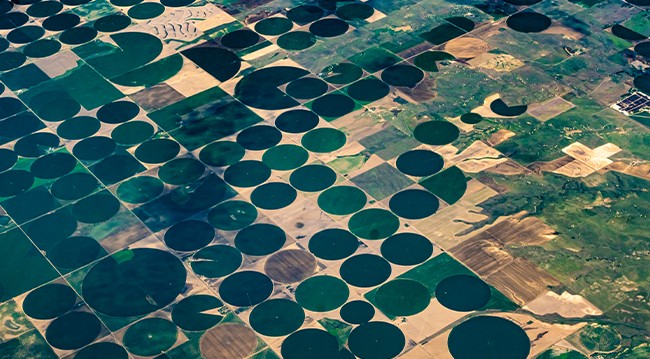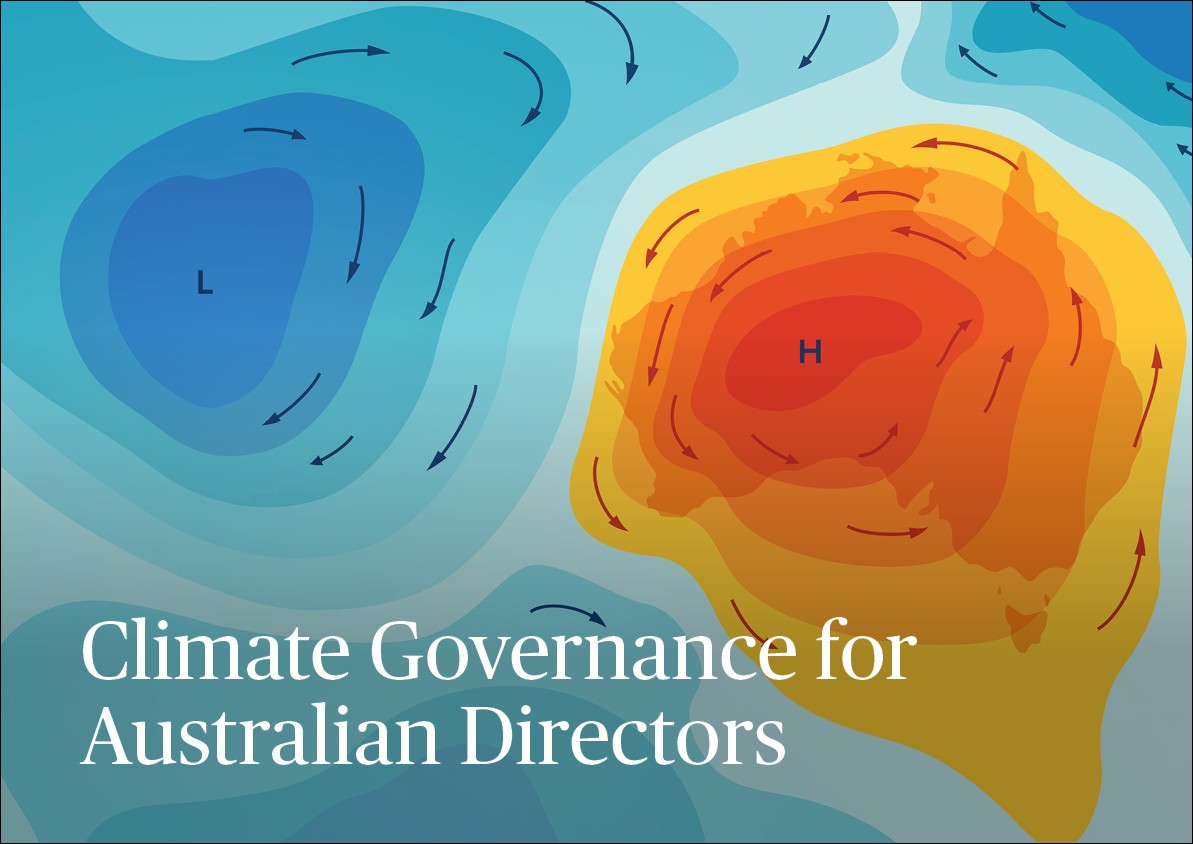Australia’s federal election result has delivered the clearest mandate on climate policy in years. With 2030 and 2050 emissions targets legislated – and a 2035 target due later this year – the Albanese government is set to remain in office during years crucial to the energy transition.
Climate change remains a structural economic challenge and a key strategy and risk issue for many boards. The prospect of the government serving beyond this term may allow for more sustained focus on complex, long-horizon issues, including how responsibility is shared across government, industry and the community.
The AICD continues to support members as the climate policy and risk landscape evolves – including at the Climate Governance Forum on Friday, 8 August 2025 in Melbourne. Hold the date!
Also in this newsletter
- What’s expected on climate and the environment from a second-term Albanese government.
- Join Barry Irwin AM (Bega Group) and Fiona Payne (Good Sammy) as they share boardroom insights on the circular economy and why it matters now.
- Markets update: Woodside fends off another investor climate push; new poll shows strong public support for climate action; and renewables lead electricity growth in early 2025.
Climate, energy and environment: delivery the challenge in second term
Climate and energy
The Albanese government enters its second term with strengthened authority on climate policy. The Coalition, now led by Liberal leader Sussan Ley with former energy spokesman Ted O’Brien as deputy, has said that its commitment to net zero by 2050 is up for review, at a time when senior figures in the Nationals challenge the target and the planned reliance on renewable energy.
For the government, policy continuity is expected across key initiatives including the Safeguard Mechanism, Capacity Investment Scheme and the rollout of mandatory climate disclosures. The government’s Powering Australia plan remains central to achieving an 82 per cent renewables share in the National Electricity Market by 2030. A $2 billion expansion of the Clean Energy Finance Corporation is projected to unlock $8 billion in private investment.
With Climate and Energy Minister Chris Bowen remaining in the portfolio, attention will be squarely on delivery – including updating Australia’s national emissions target under the Paris Agreement. The Climate Change Authority is developing advice for a figure likely in the range of 65 per cent to 75 per cent – a significant step-up in ambition if adopted, and requiring major investment in new infrastructure. There are already calls to overhaul the country’s Future Gas Strategy in line with this.
Australia’s bid to host COP31 next year with Pacific partners is gaining momentum and will increase pressure on the government to demonstrate credible climate leadership at home and internationally. The Prime Minister has appointed Kate Thwaites as Special Envoy for Climate Change, Adaptation and Resilience, a signal that regional engagement and diplomatic leadership will be key to the bid.
Environment
Progress on the government’s Nature Positive environmental law reforms has been slower. While the first tranche – establishing the voluntary Nature Repair Market – was legislated, broader EPBC Act reforms and plans for a new federal regulator, Environment Protection Australia, stalled in the Senate, triggered tensions with Western Australia, and were frozen in the leadup to the federal election.
Queensland Senator Murray Watt has been appointed Minister for the Environment and Water, and the reforms are expected to be revived in a revised form. The government has pledged broader consultation with states, industry and environmental groups.
In the 2025–26 Budget, the government set out its commitment to biodiversity, pledging $262 million over five years to support its ‘30 by 30’ goal – conserving 30 per cent of Australia’s land and marine areas by 2030. Read AICD's article for more on the government’s broader second-term agenda.
Circular Economy: Understanding the Opportunity for Boards
1-hour webinar | Wednesday, 11 June 2025, 12pm AEST | Free for members
Australia aims to double the circularity of the economy by 2035 – up from four per cent today. Reaching this goal will require shifts in strategy and business models across all sectors. This webinar will explore what the circular economy means for boards, and why it matters now.
Speakers:
- Barry Irwin AM GAICD, Executive Chair, Bega Group
- Fiona Payne GAICD, Chair, Good Sammy
The speakers will share insights from their boards, which are experienced at driving circular economy initiatives and navigating practical challenges. Register now.
Market developments update
- Woodside climate backlash at AGM. Woodside’s annual meeting drew protests and investor opposition, with 20 per cent of shareholders voting against the reappointment of its sustainability chair. Concerns focused on the company’s response to net zero alignment and last year’s 58 per cent shareholder vote against its transition plan.
- Meanwhile, the new Environment Minister Murray Watt will need to decide on Woodside’s North West Shelf development which the WA government approved last year with some conditions. Woodside has made an application to make significant changes to its proposal, which the WA EPA has reopened for public consultation.
- The Clean Energy Regulator has released data from the first year of operation of the reformed Safeguard Mechanism. Emissions from Australia’s biggest emitters fell slightly – by 1.9 per cent. While most companies met their limits using carbon offsets, three companies remain in breach, with two in voluntary administration and one having entered a court enforceable undertaking with the Clean Energy Regulator.
- IPSOS’ 2025 People & Climate Change study shows more than half of Australians (56 per cent) believe urgent action is needed on climate change to avoid failing future generations, slightly down from 2023 (60 per cent) and below the global average (62 per cent).
- AEMO’s Quarterly Energy Dynamics Q1 2025 report shows grid-scale solar and wind generation reached new first-quarter records. Solar output rose 10 per cent year-on-year to average 2,386 MW, while wind generation increased 18 per cent to 3,517 MW, driven by greater availability at new and commissioning facilities. Battery generation also reached a record high, averaging 98 MW for the quarter – an 86 per cent increase off a low base. In contrast, average output from black and brown coal-fired generators fell to new Q1 lows. Black coal generation averaged 10,269 MW (down 3.2 per cent), and brown coal averaged 3,429 MW (down 6.7 per cent).
- NSW state government grants grid access to giant, wind, solar, and battery facilities. Ten renewable energy and storage projects totalling over seven gigawatts have secured access rights to the Central-West Orana Renewable Energy Zone in NSW, following an auction to support the state’s coal transition. The approved projects include wind farms, solar-plus-battery installations, and hybrid energy developments.
- Macquarie has 'loosened' its investment and lending policies for metallurgical coal mines, citing limited alternatives for steelmaking and infrastructure development, according to an AFR report on the bank and asset manager’s annual report.
- European Commission Omnibus package update: The EU has adopted a two-year delay to mandatory sustainability reporting for second- and third-wave companies under its ‘Stop the clock’ directive. Member states have until 31 December 2025 to incorporate the changes into national law.
- New short-term climate scenarios from the Network for Greening the Financial System released. The scenarios project that swift climate action could reduce global output by 0.5 per cent by 2030, while a delayed transition could increase the loss (by 1.3 per cent) and raise default risks in the power sector above 10 per cent. These scenarios supplement the group’s long-term models, which were updated last year before some US regulators withdrew following President Trump’s return to office.
- New resource: Asking Better Questions on Nature for Board Directors. The Taskforce on Nature-related Financial Disclosures (TNFD) has released guidance in collaboration with Chapter Zero UK and others to help directors and senior executives across business and finance surface critical insights about nature-related dependencies, impacts, risks and opportunities to inform their decision making.
Strengthen your climate governance capability
Climate Governance for Australian Directors – Short Course
Build your knowledge and confidence in AICD’s highly rated four-week course on climate governance. The online commitment is just two hours per week. Early registration is recommended, with forward bookings filling fast. Register today.
Introduction to Climate Governance – Free Online Module
This self-paced, two-hour module is free for AICD members and provides essential foundations in climate literacy – helping directors understand their responsibilities in a changing risk landscape.
Already a member?
Login to view this content





